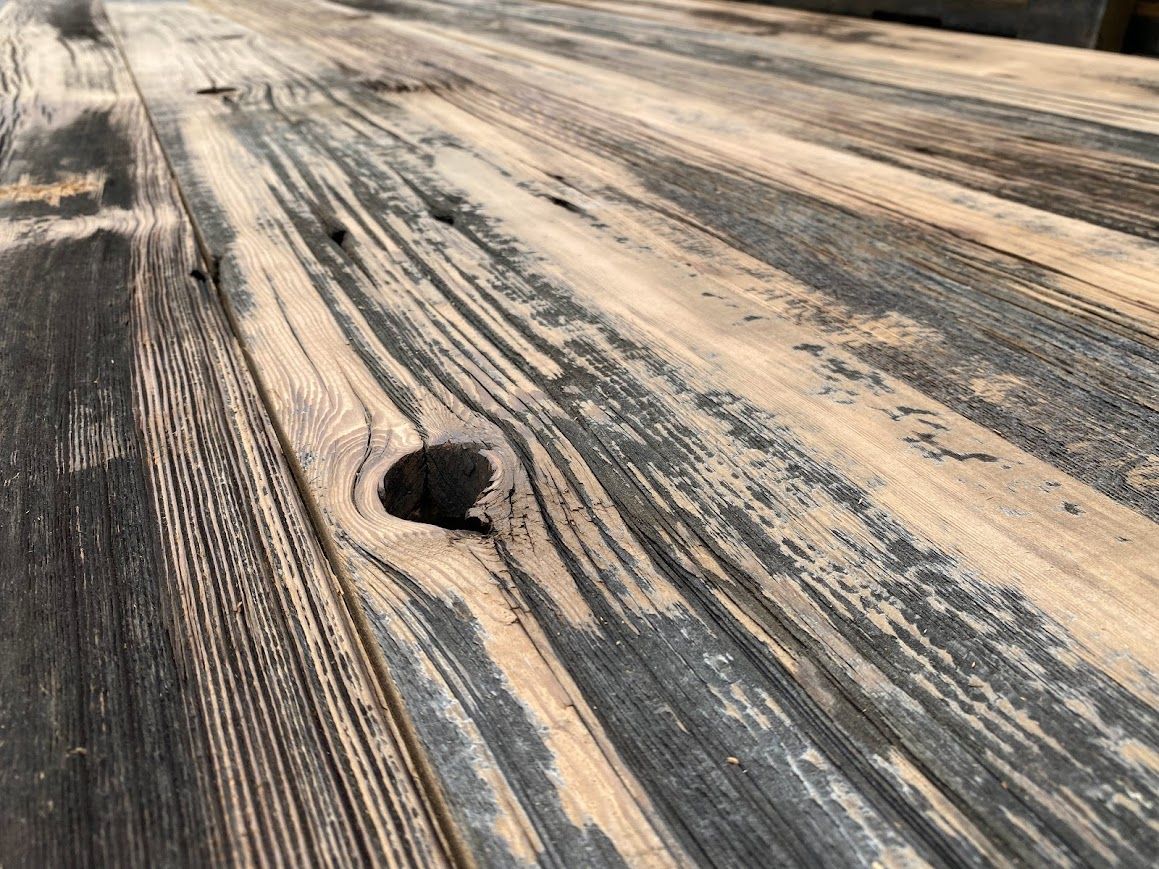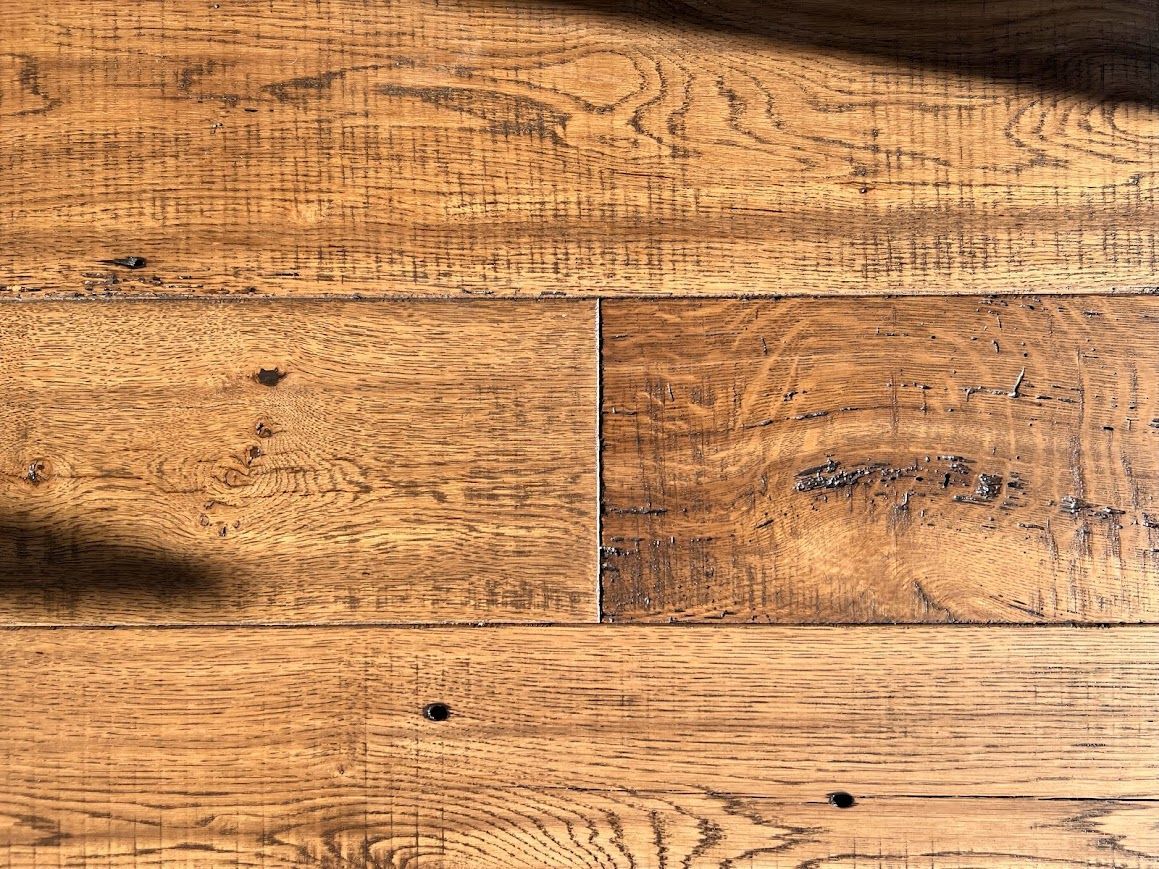Can You Fake Reclaimed Wood Patina? The Honest Truth
Faking Reclaimed Wood Patina? Is It Achievable?

Can you really fake reclaimed wood patina? This question comes up a lot, especially for DIY enthusiasts and designers looking to recreate the look of aged wood without the cost. The truth is, while you can imitate the worn look of reclaimed timber using modern techniques, it’s not easy to match the character and depth that comes from years of natural aging.
In this post, we’ll explain what makes real patina so unique, reveal common methods for aging new wood, and share how to spot the differences between real and imitation. By the end, you’ll have all the knowledge you need to choose the right option for your next project.
What Is Real Patina?
Real patina takes decades to form. It comes from how wood interacts with air, light, moisture, and weather over time. This process changes the wood itself, going deeper than the surface to affect texture, density, and color.
Natural patina doesn’t just sit on the surface. It soaks into the wood, creating unique color changes that follow the grain. These changes are completely tied to how the wood has aged and can’t be rushed or fully recreated.
How Wood Ages Naturally
Sunlight Effects
UV rays from the sun break down wood fibers over time, creating contrasting shades in the wood. Some parts lighten while others get darker, leading to a mix of colors that almost tells a story of how it was used and where it was placed.
Changes from Water
Wet and dry cycles affect wood too. Water impacts the surface, creating tiny cracks and changes in texture that alter how light reflects off the wood.
Oxidation
When wood is exposed to air, oxygen slowly breaks down compounds in the wood. This creates the warm gray and brown tones we love in aged timber. The exact look depends on the type of wood and the environment.
How People Fake Aged Wood
Using Chemicals
Tea, coffee, vinegar, or specialized aging products can darken new wood. While this creates some variation in color, it stays mostly on the surface and isn’t as nuanced as real patina.
Adding Wear and Tear
Chains, hammers, and other tools are sometimes used to add dents and scratches, making wood look worn. This method mimics damage seen on old wood but often lacks the logic of real-use patterns.
Burning or Heating
Controlled heat or flame can quickly darken wood and mimic weathered wood. However, this approach can make the wood look more artificial if overdone.
Why Fake Patina Doesn’t Measure Up
It’s Only Skin-Deep
Artificial aging changes the surface, but natural patina goes deeper. Real aged wood has richer color variations and depth that fake methods can’t fully replicate.
Unrealistic Weathering
Fake weathering often doesn’t follow the patterns you’d see in real life. For example, areas that should look sun-kissed might be over-darkened, or dents might appear in random spots where wear wouldn’t naturally happen.
The Structure Stays the Same
Naturally aged wood shows changes in how its grain is raised, its density, and even its texture. These structural changes are hard to fake and give real reclaimed wood an unmistakable feel.
How to Tell Real Patina from Fake
Subtle Color and Grain Patterns
True patina follows the wood grain, creating a mix of shades that’s rich and uneven. Faked patina often has flat colors that miss this complexity.
Outer and Edge Aging
Reclaimed wood shows consistent wear everywhere, including its edges and ends. If the ends reveal fresh, untreated wood, it’s a giveaway that the patina is fake.
Logical Signs of Use
Naturally aged wood shows wear where it makes sense, like spots exposed to repeated sunlight or rain. Random scratches or too-smooth finishes can make a piece look obviously manufactured.

Can Artificial Aging Work for Your Project?
Budget-Friendly Projects
If your budget won’t allow for reclaimed wood, artificial aging can give your project a rustic look for less cost.
Consistent Colors and Patterns
Sometimes you need wood that looks uniform for a design idea. Fake patina can help create consistency that reclaimed wood doesn’t always offer.
Availability
If you don’t have the time or access to reclaimed wood, creating artificial patina lets you finish your project on schedule.
Why Authenticity Is Worth It
At Bay & Bent, we only use real reclaimed wood from historic barns across the United States. Every beam and plank has a story, told through its natural aging process. These materials show the effects of decades of weather, seasons, and use, creating a charm that’s impossible to fake.
The depth of color, logical weathering, and distinctive texture of real patina make reclaimed wood a one-of-a-kind material. While fake aging can look nice from far away, it can never fully recreate the character built over generations.
How to Spot Quality Reclaimed Wood
- Check the Depth of Color: Real patina goes beneath the surface. Sand a small spot to see if the coloration runs deep.
- Look for Natural Aging Patterns: Authentic reclaimed wood shows differences based on how it was exposed to sunlight, rain, or contact with other surfaces. Hidden areas will look different than those exposed to the elements.
- Feel for Texture: Naturally aged wood has a smooth-rough quality. The hard grain stands out as the softer grain has worn down, creating a texture that’s hard to fake.
Choosing the Right Option for Your Project
- When Authenticity Matters: If your project needs the true charm of age and history, reclaimed wood is worth the investment. Over time, you’ll appreciate its character even more.
- When Budget Is Tight: If reclaimed wood is out of reach, focus on using artificial aging techniques for the most visible areas while saving elsewhere.
- When Consistency Is Key: For designs that need a uniform look, artificial aging might be a better choice.
Final Thoughts
While artificial patina can add a weathered touch to your projects, it’s rarely a match for the beauty of genuine reclaimed wood. Authentic wood carries history in its grain and texture, which simply cannot be replicated by shortcuts.
If you want wood that tells a story and demands attention, genuine reclaimed timber is the way to go. At Bay & Bent, we carefully source our materials from historic barns, giving new life to wood that’s shaped by time itself.
Learn about how we preserve the legacy of this heritage timber at
Bay & Bent. Find out how our passion for authenticity can bring life to your next project!









